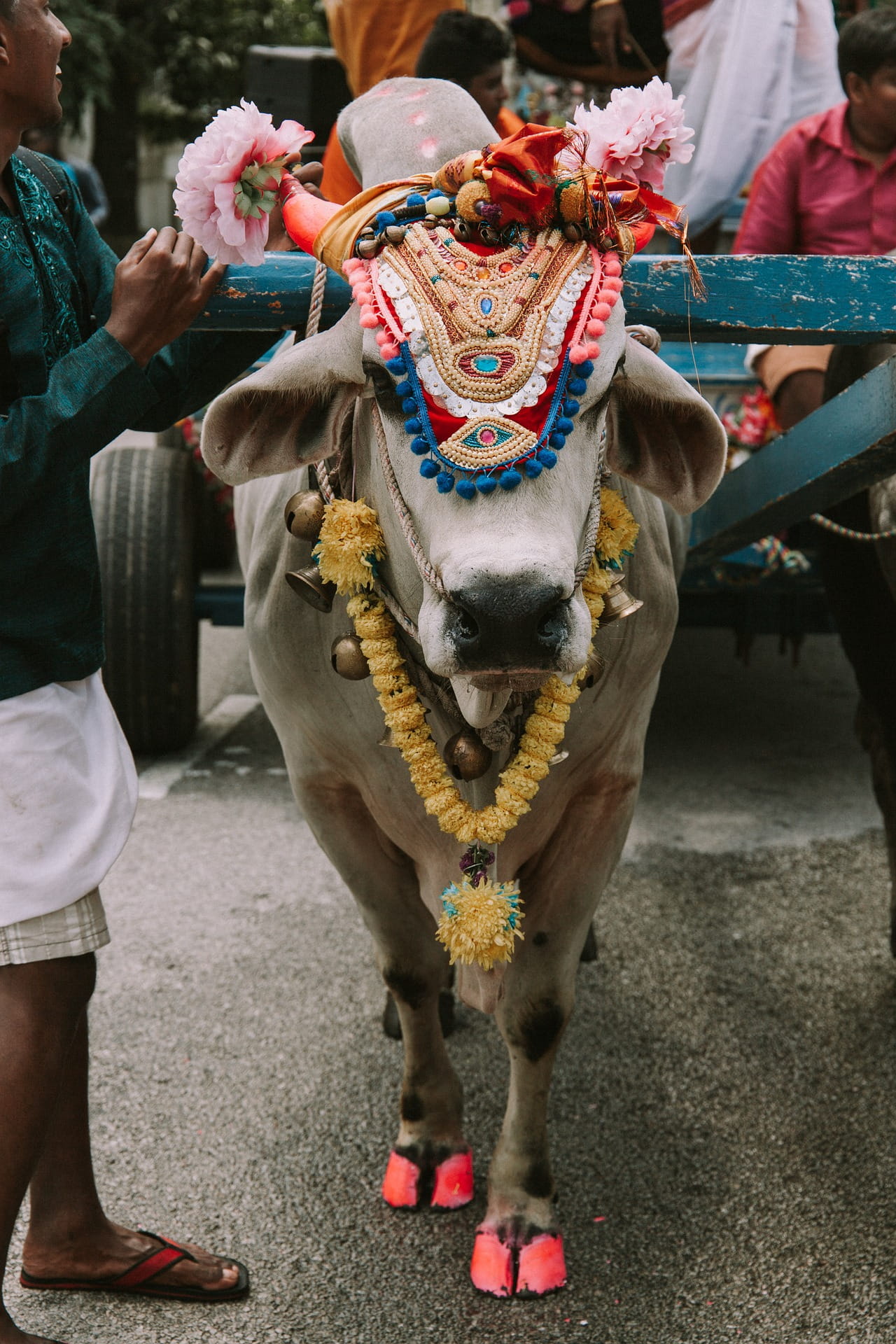"Daddy, why don't we have Christmas?" That question was heard in so many Hindu homes we visited that, some years ago in cooperation with scholars and elders, an alternative for Christmas was conceived. It's interesting that in 1966 the Afro-American community created Kwanzaa, a social, Black-identity, earth-based festival celebrated each year from December 26 to January 1. Our own Pancha Ganapati is a festival to the five-faced elephant God. It is five days of gift-giving and festivities within the home, especially for the children. There is no need for a tree (eco-advocates appreciate this), nor wreaths, nor a Santa. Lord Ganesha does it all in five days of merriment and mirth.
Those who have taken up this home festival from December 21 through the 25 have enjoyed it year after year. It can include outings, picnics, feasts, exchange of cards and gifts with relatives, friends and business associates. Each day a tray of sweets, fruits and incense is offered to Pancha Ganapati, often prepared and presented by the children. Chants, songs and bhajanas are sung in His praise. After puja, sweets are shared as prasada. Each day gifts are given to the children, who place them before Pancha Ganapati to open only on the fifth day. Greeting cards are exchanged, always offering Hindu wisdom or verse from scripture.
During each of the five days the entire family focuses upon a different sadhana. Because of the importance of this festival as a new beginning and mending of all mistakes of the past, a festive shrine is created in the main living room of the home. At the center is placed a large wooden or bronze five-faced statue of Lord Pancha Ganapati. If this is not available, a large picture of Lord Ganesha will do. Each morning the children dress or decorate Ganesha anew in a different color: golden yellow on December 21, then ruby red, royal blue, emerald green and finally brilliant orange. These are the colors of His five powers, or shaktis, adored by all.
Day One: The sadhana for the first day is to create a vibration of love and harmony among the immediate family. The day begins early as all work to design and decorate the shrine with traditional symbols, rangoli, lamps and more. After a grand puja invoking the spirit of Pancha Ganapati, the family sits together to share their love. If strained relationships have arisen during the year, they make amends for misdeeds performed, insults misspoken, mental pain and injuries caused and suffered. Gifts are then exchanged and placed unopened before Pancha Ganapati.
Day Three: On the third day the family works to create a vibration of love and harmony among business associates, casual merchants and even the public. This is the day for presenting gifts and showing appreciation to merchants, customers, employers and employees. The sadhana today is to settle debts and disputes.
Day Four: The sadhana for day four is to draw forth the vibration of joy and harmony that comes from music, art, drama and the dance. Family, relatives and friends gather for satsanga to share and enjoy everyone's artistic gifts. Then all sit together before Ganesha, Patron of Arts and Guardian of Culture, discussing Hindu Dharma and making plans to bring more of cultural refinements into the home.
Day Five: The sadhana for the final day is to bring forth love and harmony
within all three worlds. Because of sadhanas well performed during the
first four days, everyone is now intensely aware of Ganesha's grace and
their love for Him is overflowing. On this day the entire family
experiences an outpouring of fondness and tranquility from the God
Himself. His blessings fill the home and hearts of everyone within it,
inspiring them anew for the coming year. This exchange of affection
between all members of the family and the Lord is invoked and perpetuated
through the day by performing five special pujas. These pujas to Pancha
Ganapati solicit help from His devas in the home and establish the
patterns for improvement in family life.
The overflowing love felt today will inspire generosity in the year to
come, bringing abundance and good fortune. The first puja is at 6 am, after
which each one present gives verbal testimony about prayers answered
during the past year. Hearing testimony strengthens the faith of everyone.
Then vows of sacrifice can be verbally made to improve the quality of
life, such as giving up smoking or other harmful habits. The second puja
is at 9 am, the third at noon, and the fourth at 3 pm. The last puja, held
at 6 pm, is the long-awaited time. The five sadhanas have been completed.
Peace, love and harmony among everyone has been restored. After the puja
and before the great feast that follows, Panchamukha Ganapati gives His
final darshana and prasada to one and all. Gifts are distributed and
joyously opened. Happy children. Happy parents. Happy God.

